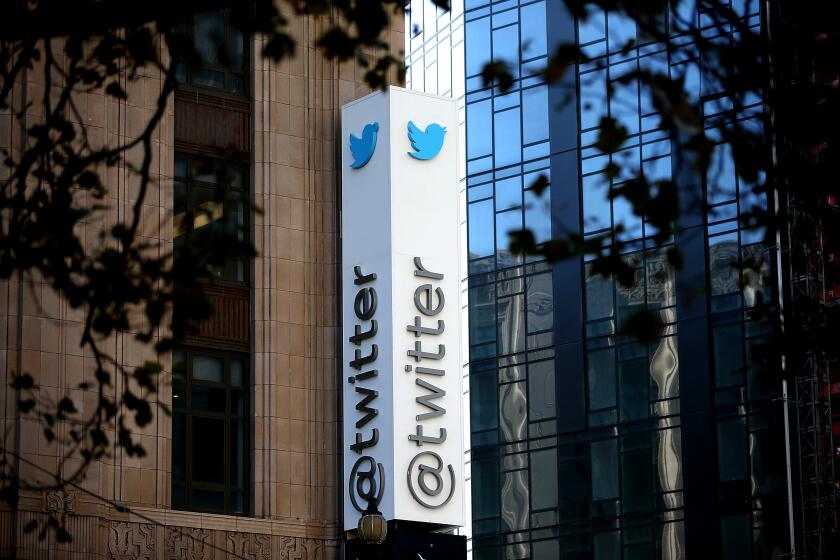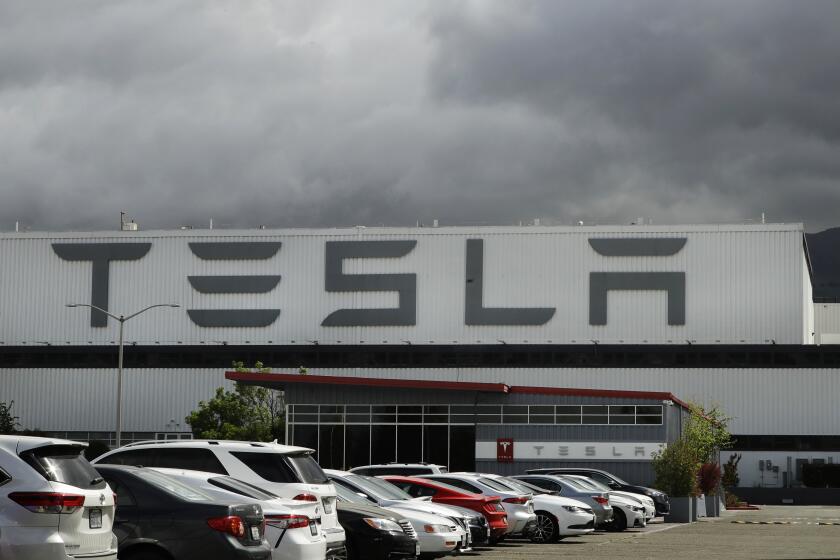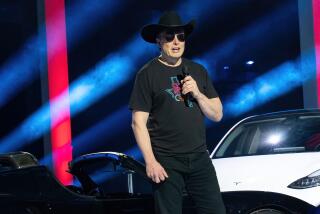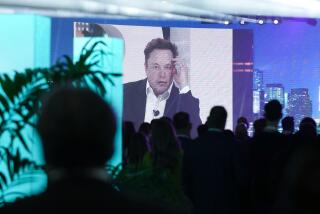With Twitter layoffs set to start, employees worry about getting their severance
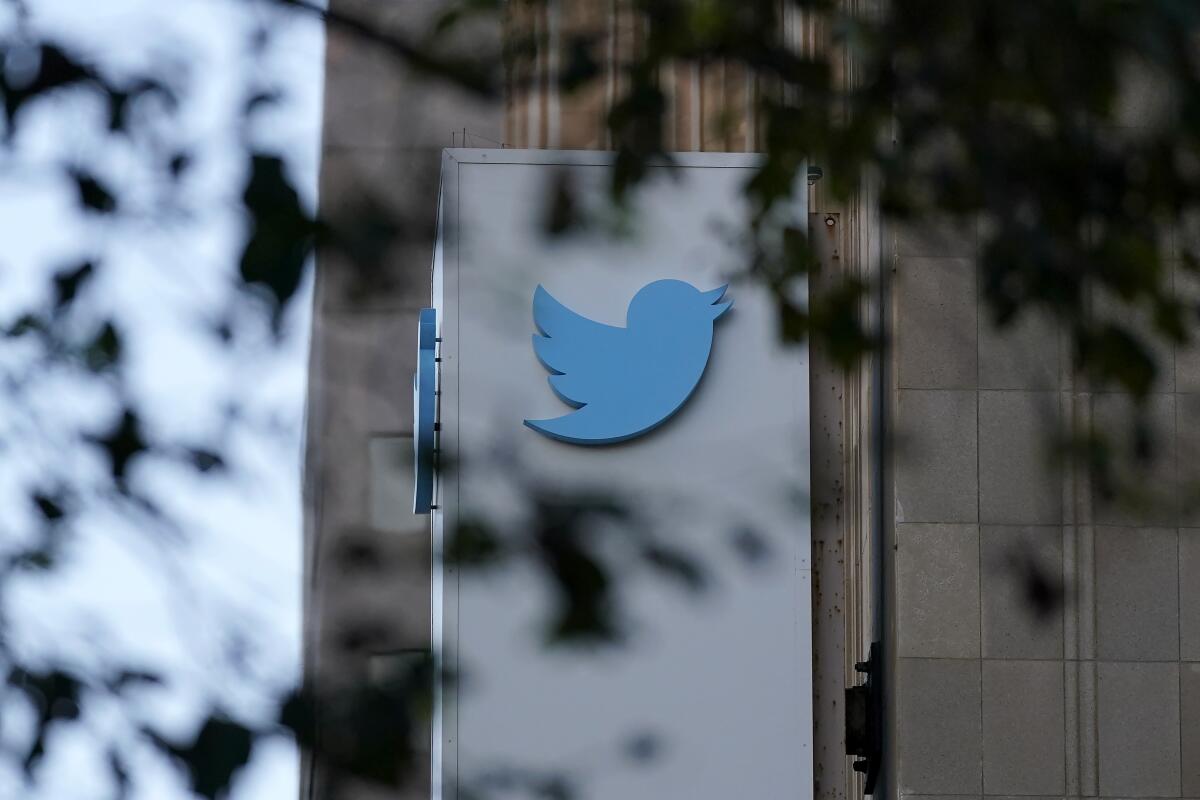
- Share via
In recent years, big technology companies have dangled ever more generous benefits to entice engineers in a seller’s talent market. Layoffs, a rarity in Silicon Valley over the last decade, have typically come with the consolation of generous severance packages often including months of salary and healthcare coverage.
Now that expectation is collapsing — and nowhere more rapidly than at Twitter, where thousands of employees are suddenly facing the prospect of joblessness in a newly chilly employment landscape.
Under new owner Elon Musk, the social media platform is preparing to terminate a large portion of its workforce — about half of its 7,500 workers, according to Bloomberg.
In an email shared with the Los Angeles Times, the company said all employees would be notified of whether they still had their job via email by 9 a.m. Friday. All offices will be temporarily closed and badge access suspended, and any employees at an office were asked to return home, the email said.
After the completion of Musk’s $44-billion takeover a week ago, there has been widespread concern among employees about what severance benefits they might receive and how Musk might seek to reduce the expected payout.
The Twitter layoff news comes during widespread layoffs in the tech industry, with Lyft announcing layoffs of 13% of its staff and Stripe cutting 14% of its workforce.
Stripe announced a generous severance payout of 14 weeks plus more for longer tenure, as well as six months of healthcare, 2022 bonuses and accelerated stock vesting for laid-off employees.
It’s unclear what benefits Twitter employees might receive, but in the event of a mass layoff, workers have some rights protected by both state and federal law, as well as the terms of the merger agreement between Musk and Twitter.
As Elon Musk completes his acquisition of Twitter, workers debate whether to stay put and await termination or test the job market during a time of hiring freezes and layoffs across the tech industry.
Musk, however, has a long history of pushing the legal envelope in matters involving regulations around how Tesla advertises its autonomous driving capabilities, an agreement with the Securities and Exchange Commission to get his tweets approved in advance, a public health order to close a factory during COVID-19 lockdowns and numerous other examples.
In his pursuit of Twitter, Musk ignored SEC disclosure requirements and tried to back out of a signed merger agreement.
Employees have some protection in the terms of that merger agreement, which states that Musk must provide severance payments and benefits to employees terminated within one year of the acquisition that are “no less favorable” than those applicable before Musk took over.
Ramish Saqib, who worked as a software engineer at Twitter for a year, said he was given one week’s notice and 60 days of severance pay when he was laid off in July. Speaking on background, another former employee said the standard severance for large layoffs was 60 days with additional pay based on years of tenure.
If Musk doesn’t offer similar severance packages to employees laid off in the next year, they would have grounds to sue the company as intended third-party beneficiaries to the agreement, said Lloyd Greif, chief executive of Greif & Co., an investment bank that handles mergers and acquisitions.
Tesla lost a trial in which it was accused of turning a blind eye to racial taunts and offensive graffiti at a Northern California plant.
“It’s a promise from the company to the employees that when Elon Musk signed on the dotted line to buy Twitter, he became the company,” Greif said. “They could bring an action against the company he now owns … to enforce that promise.”
Musk skimping on severance packages for laid-off employees would certainly invite class-action litigation against the company under elements of the California labor code meant to protect workers in these types of situations, Greif said.
Under the federal WARN Act, companies with more than 100 employees are required to give at least 60 days’ notice if they plan to lay off more than a third of the workers at one location or more than 500 employees, regardless of the percentage, within a 30-day period. An employer that violates the notice requirement may be liable for back pay for the number of days less than the 60-day requirement. Companies often offer 60 days of severance pay in lieu of notice.
California’s WARN Act is even stricter, applying when there’s a layoff of 50 or more employees within a 30-day period, and the employer can be liable for civil penalties in addition to the back pay.
According to a number of sources close to Twitter, there has been widespread speculation among employees in recent days that Musk may try to use for-cause firings to deny severance to many terminated workers. Immediately upon taking over, Musk set aggressive deadlines for new feature launches; managers reportedly urged their teams to work 12-hour days and sleep in the office or risk being targeted for dismissal.
Musk already terminated several top Twitter executives last week, including its CEO and chief financial officer. By classifying them as for-cause firings, he is reportedly seeking to avoid paying compensations of $20 million to $60 million listed in the terms of the merger agreement.
In fact, the WARN Act does not distinguish between employees fired and those let go for cause, said Laura Reathaford, a California employment lawyer with Lathrop GPM. Companies are typically cautious about firing employees for cause during periods of large-scale workforce reductions and tend to handle such terminations as layoffs to avoid opening themselves up to legal scrutiny.
At the same time, WARN regulations are often “cumbersome and confusing” to enforce, making litigation over the act uncommon, Reathaford said.
Tesla, the electric-car maker that is the source of most of Musk’s vast fortune, was sued in June by former employees who said the company violated the WARN Act by failing to provide 60 days’ notice when it laid off more than 500 employees at a plant in Nevada.
Several software engineers who were laid off during that time in a 10% reduction of the workforce received only one week’s severance and were told they were fired in secret meetings with their managers, according to reporting by Gergely Orosz in the Pragmatic Engineer.
Orosz said Tesla was trying to bypass the WARN Act by disguising the layoffs as performance-related terminations. Twitter did not immediately respond to a request for comment. Tesla does not maintain a media relations department or respond to media inquiries.
More to Read
Inside the business of entertainment
The Wide Shot brings you news, analysis and insights on everything from streaming wars to production — and what it all means for the future.
You may occasionally receive promotional content from the Los Angeles Times.
